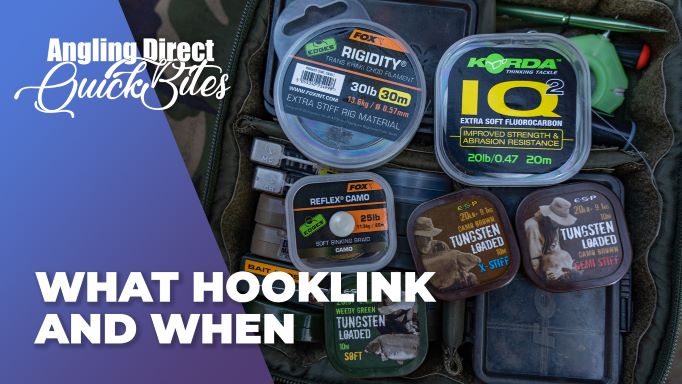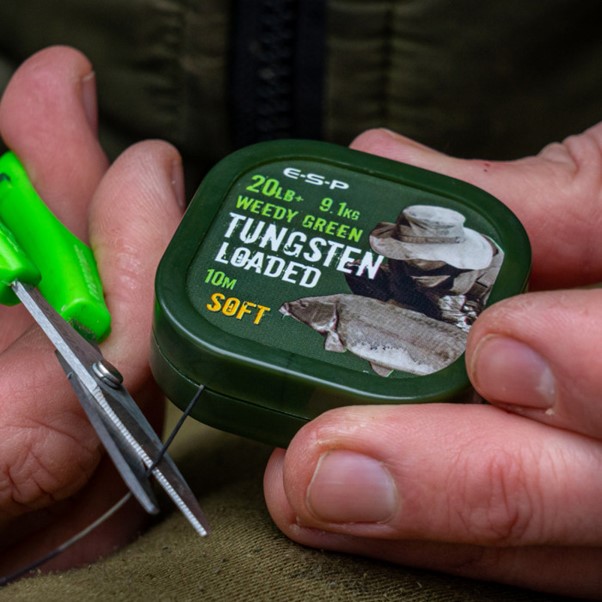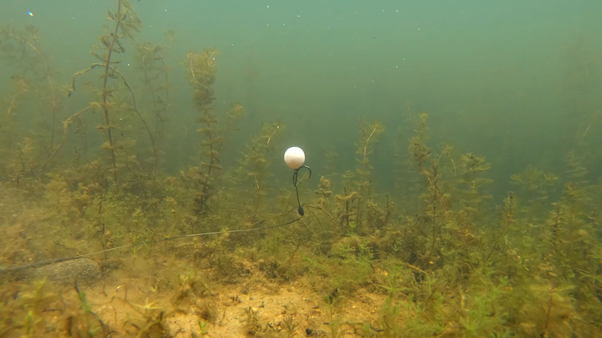Carp Fishing How To Guide: What Hooklink And When

As part of this how-to guide for carp fishing, Angling Direct's very own Chris Ansell shares the various types of carp fishing hooklinks, which hooklinks to use on different lake beds, as well as some great fishing rigs you can use with each variant.
What Is a Hooklink Used for in Fishing?
Hooklinks are the sections of fishing line that connect hooks to Mainlines. They can be anything from 1" long for PVA bag or chod rigs or up 12 feet depending on what type you're using and how big your fish might get! Swivels join these two pieces together so they don't separate while in water.
Types of Carp Fishing Hooklinks
There are so many different variants of hooklinks now available on the angling market if you are targeting carp. Check out the different styles of hooklinks below.
Fluorocarbon - Pretty much invisible in water and stiffer than normal nylon. Chris uses the Korda IQ Flurocarbon Hooklink for carp angling.
Coated Braid - The most popular kind of braid used as hooklinking in carp angling, coated braid tends to come in different variants of soft, stiff and very stiff (dependant on the manufacture). Your choice of coated braid depends on your lake bed. Chris is fond of the ESP Tungsten Loaded Coated Braid for his angling.
Non-Coated Braid - Not to be used on your standard rig due to tangling, a non-coated braid such as the Fox Edges Reflex Camo 20m, is perfect when fishing solid PVA bags of bait. Its soft and suppleness mean you can fold the hooklink up inside PVA bags and cast out.
Bristle Filament - A hooklink that Chris admits to using the most in his carp fishing, a Bristle Filament hooklink such as ESP Stiff Rig Bristle Filament, offers lots of rigidity and memory. With springtime fishing, this is a go-to hooklink as it covers light weeded lake beds and spots well.


What are the Best Fishing Hooklinks to Use on Lakebeds?
Fluorocarbon - Used on flat lakebeds such as gravel bars and sand beds. Beds with no debris on them are suited to this hooklink material due to its stiffness and ability to kick back your rig on the bed.
Coated Braid - Extra stiff coated braids tend to work well on flat grounds and lake beds, whereas super soft coated braids will aid carp anglers fishing over lots of chod and debris on the lake bed. The softness in the braid means it can easily lay over the bumps the debris caused on the bottom. Of course, the semi-stiff coated braid falls somewhere in between these.
Non-Coated Braid - Super soft and supple braids can be used as a hooklink when covering messy lake beds.
Bristle Filament - This stiffness of this hooklink is best used over choddy grounds that are heavily leafed or even in light weed.


Great Fishing Rigs to Try with Hooklinks
Fluorocarbon: Chris likes to fish this hooklink as D-Rigs and a wafter bait. The hook link material means it can kick the bait away with no issues from the lead.
Stiff Coated Braid: Use the semi-stiff or extra stiff coated braid on rigs such as the German rig as a flat lake bed will need a stiffer hooklink to kick your choice in hookbait away from the lead.
Soft Coated Braid: Works great with the claw rig, when fishing a bottom bait as the soft material can just lay over any debris on the lakebed.
Non-Coated Braid: Perfect for the solid PVA bag rigs!
Bristle Filament: Its memory and stiffness lend well to creating chod rigs and the classic hinge stiff rig. You can actually curve this hooklink and mould to a shape permanently.

